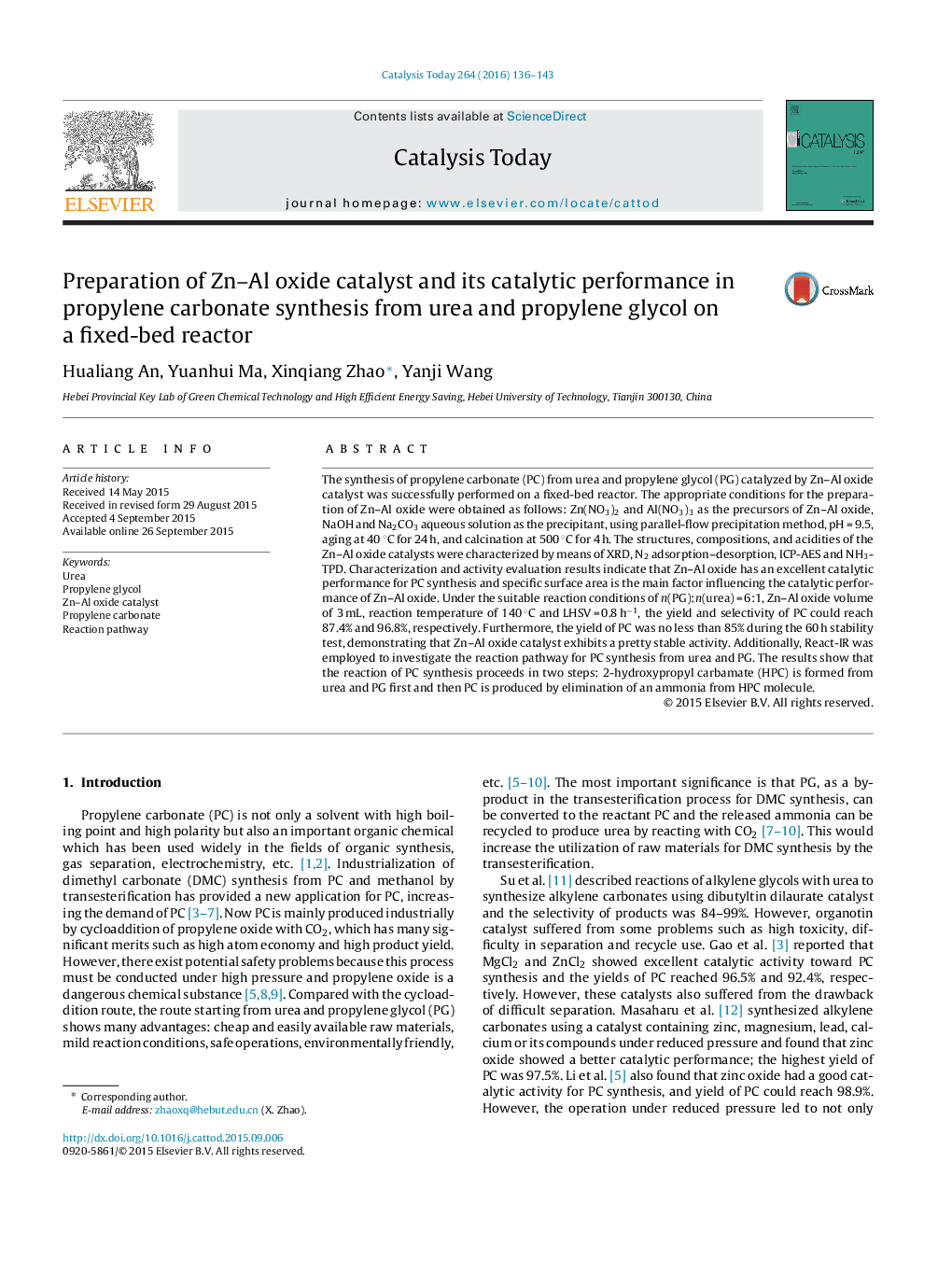| کد مقاله | کد نشریه | سال انتشار | مقاله انگلیسی | نسخه تمام متن |
|---|---|---|---|---|
| 53307 | 46962 | 2016 | 8 صفحه PDF | دانلود رایگان |
• The synthesis of PC was performed on a fixed-bed reactor at atmospheric pressure.
• Zn–Al oxide catalyst exhibits a pretty activity and stability for the PC synthesis.
• A reaction pathway for the PC synthesis was established by means of React-IR.
The synthesis of propylene carbonate (PC) from urea and propylene glycol (PG) catalyzed by Zn–Al oxide catalyst was successfully performed on a fixed-bed reactor. The appropriate conditions for the preparation of Zn–Al oxide were obtained as follows: Zn(NO3)2 and Al(NO3)3 as the precursors of Zn–Al oxide, NaOH and Na2CO3 aqueous solution as the precipitant, using parallel-flow precipitation method, pH = 9.5, aging at 40 °C for 24 h, and calcination at 500 °C for 4 h. The structures, compositions, and acidities of the Zn–Al oxide catalysts were characterized by means of XRD, N2 adsorption–desorption, ICP-AES and NH3-TPD. Characterization and activity evaluation results indicate that Zn–Al oxide has an excellent catalytic performance for PC synthesis and specific surface area is the main factor influencing the catalytic performance of Zn–Al oxide. Under the suitable reaction conditions of n(PG):n(urea) = 6:1, Zn–Al oxide volume of 3 mL, reaction temperature of 140 °C and LHSV = 0.8 h−1, the yield and selectivity of PC could reach 87.4% and 96.8%, respectively. Furthermore, the yield of PC was no less than 85% during the 60 h stability test, demonstrating that Zn–Al oxide catalyst exhibits a pretty stable activity. Additionally, React-IR was employed to investigate the reaction pathway for PC synthesis from urea and PG. The results show that the reaction of PC synthesis proceeds in two steps: 2-hydroxypropyl carbamate (HPC) is formed from urea and PG first and then PC is produced by elimination of an ammonia from HPC molecule.
Figure optionsDownload high-quality image (184 K)Download as PowerPoint slide
Journal: Catalysis Today - Volume 264, 15 April 2016, Pages 136–143
